Are We Cooking Ourselves Sick?
Is cooking our food giving us cancer? The World Health Organization has already issued warnings about certain cooking methods. Research has shown high levels of cancer causing compounds that are produced in some of the ways we cook our food. So, what are we to do? Is there a way to cook our food that reduces the risk of cancer? Let’s look at the risks of several common cooking methods.
This post contains affiliate links. As an Amazon Associate, I earn from qualifying purchases.
Can Barbecuing Really Cause Cancer?
After I was diagnosed with cancer, I wanted to do everything in my power to battle this disease and stay healthy. This included being active and eating healthy foods. When researching healthy eating, I discovered one of my favorite foods was on the “likely to cause cancer” list.
That was grilled steak. (Gasp!)
Can barbequing really cause cancer? I needed to investigate further.
My husband and I love BBQ, but science tells us that charred red meat off the grill contains carcinogens.
The science is so compelling that the World Health Organization (WHO) issued a warning and recommends against eating barbecued meats.
This saddened me.
But it also piqued my curiosity.
What other cooking methods cause cancer?
Was it only charred beef off the grill?
Were there cooking techniques that could help prevent against cancer and illness?
I set out to read and understand as much about cooking and cancer that I could.
So, let’s dive right in and explore some common cooking methods and their effects on our health.
Grilling, Barbecuing and Cancer
According to the World Health Organization, high temperature cooking or food in direct contact with a flame produce compounds that MAY increase risk of cancer. Although they do further state that there is not enough data to reach a conclusion about cancer risk. That might depend on which cancer and which meat we are talking about.
There does seem to be a connection with the consumption of red meats, such as beef and pork, and colon cancer. High heat cooking affects the heme (blood) molecules inside the meat to produce chemicals such as polycyclic aromatic hydrocarbons (PAHs) and heterocyclic aromatic amines (HAAs) that have been linked to cancer.
How to Reduce the Toxic Effects of Grilling and Barbecuing
I just can’t give up my BBQ. So, I investigated a few ways to reduce these risks.
- Reduce the temperature and cook food slowly. This is easier done in a gas grill where you can either turn down the gas flow or turn off some of the burners and cook over indirect heat. It is a little harder to do with charcoal, but using a single layer of charcoal can reduce the heat too. Cook the meat indirectly by having the charcoal on one side and the meat on the other side. You will need a lid on the BBQ to keep the temperature adequate to cook the food.
- Use leaner meats to decrease flare ups. Direct contact with the flames causing that charring is the worst culprit for producing HAAs.
- Marinade the meats for at least 15 minutes. Some marinades, such as teriyaki, can significantly reduce the amount of HAAs.
- Eat foods high in antioxidants, such as vitamin C and E, with the meal. This can help counteract the effects of PAHs and HAAs in the body. So, if you want to enjoy a good BBQ, have a side salad with dark leafy greens and bell peppers with it. Cabbage and tomato are also good choices. Fresh fruit is also high in antioxidants.
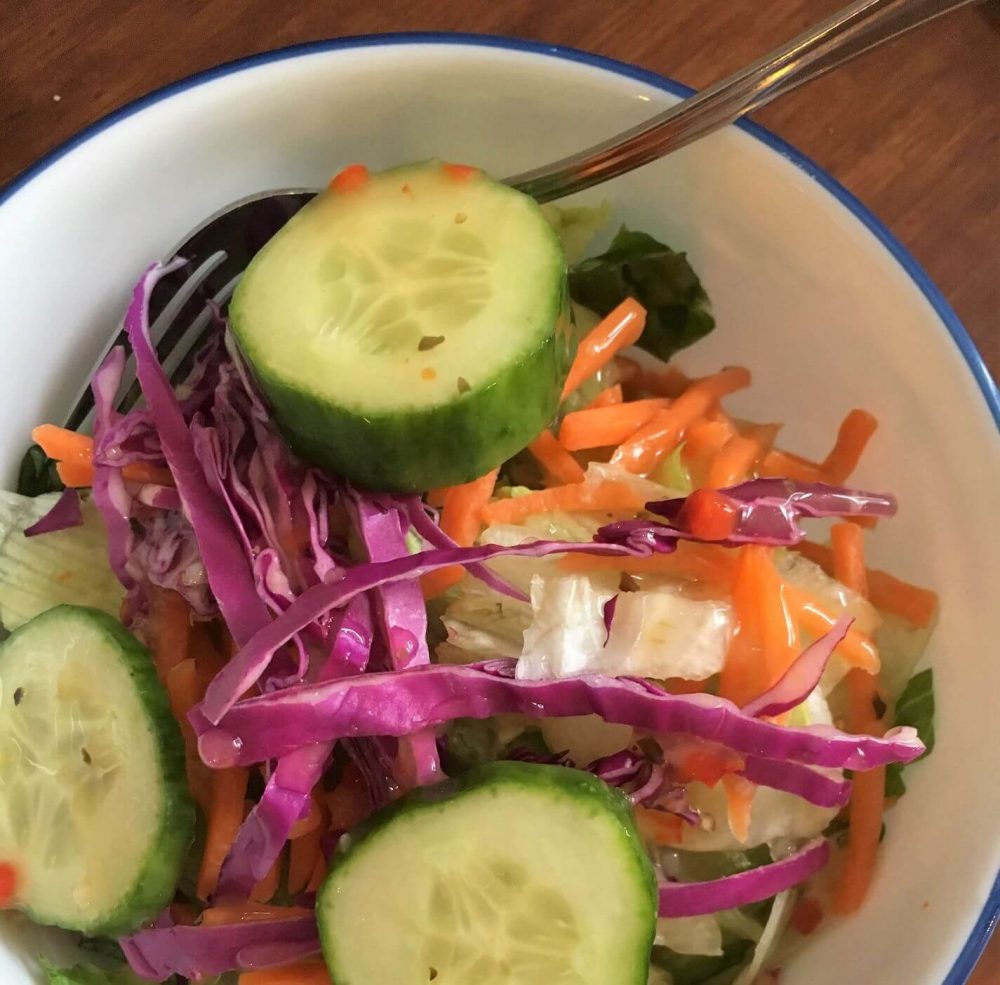
Frying, Deep Frying and Cancer
Frying and deep frying are another form of high heat cooking. Starchy foods cooked to a high heat, like potatoes can contain chemicals such as acrylamide that has been linked to cancer. These chemicals have been listed as “probable human carcinogens” based on studies in laboratory rats. Now, keep in mind that these studies may not translate to humans. So, we don’t know if these compounds cause cancer in people. The FDA is now conducting studies to see if there is a risk to people. It is thought that in a typical healthy diet, these compounds are a low risk, based on epidemiological data obtained so far.
What Are Acrylamides
Acrylamides come from the sugars and starches naturally found in some plant foods. They are not associated with animal-based foods, such as meat, dairy or seafood. They are produced at temperatures above 248 degrees Fahrenheit. The longer the foods remain at these high temperatures, the more acrylamides are produced.
To reduce these compounds, soak raw potato slices in water for 10 to 15, then pat them dry before frying or deep frying. Don’t overcook the foods. Take them out of the heat as soon as they are done to avoid even more of these compounds to form. Avoid processed foods, that use high heat methods, such as potato chips and French fries.
The Extra Fat is Not Healthy
Frying and deep frying also use fats to cook. These are usually saturated fats that have been linked to heart disease. It is best to avoid this cooking method as much as possible. However, during times that frying is desired, try to do it in the healthiest way possible. Use healthier unsaturated oils, such as olive oil.
Cast Iron Pans
Use cast iron frying pans. Cast iron can infuse the food with iron as it cooks. Most diets in North America are lacking in iron. The amount of iron we get via this cooking method is controversial, some studies suggest minimal amounts and some say up to daily requirements. It depends on what you are cooking. Acidity, moisture content and how long the food is in contact with the pan are all factors in how much iron leaches into the food. However, I believe that if any iron at all gets into the food, that is a good thing.

I bought this Lodge Cast Iron Cookware Set after my cancer diagnosis.
I love this set and use it every day.
What about non-stick pans?
The older non-stick pans contained a chemical called perfluorooctanoic acid. This is toxic and a suspected carcinogen. Luckily, this has been phased out, so that most non-stick pans are now made of Teflon (polytetrafluorethylene) or other safer materials. Avoid buying older, second-hand non-stick pans for this reason.
However, if you are frying in the newer version of non-stick pans, watch your temperatures. Generally, the Teflon pans are safe. But, at temperatures over 500 degrees Fahrenheit, the coatings can break down and release toxic chemicals into the air. It can cause Teflon flu, with temporary symptoms such as a fever, sore throat and coughing. Luckily, this is rare in humans. It is extremely toxic to birds, who are more sensitive to these compounds.
Toxic Fumes can be Released from Overheated Non-Stick Pans Quickly
Surprisingly, these pans can heat to toxic temperatures very quickly on a high burner heat. Good Housekeeping ran their own test and found that some lightweight pans reached 500 degrees in as little as 1 3/4 minutes. Good Housekeeping recommends cooking on low to medium heat in these pans. Never pre-heat the pan, as an empty pan releases toxin sooner.
Ingesting flakes of non-stick coating is safe. These inert substances just pass right through us. It is only toxic if we inhale overheated Teflon fumes.
There are no long-term studies regarding a lifetime of use with these pans. All the studies done are short term studies. It is assumed that they are safe, but we don’t know for certain if there might be accumulative effects.
Microwaving and Cancer
According to the World Health Organization, microwaving food is safe and preserves the nutrient content of the food.
What Are Microwaves?
Microwaves are a form of energy, like radio waves, produced by a tube inside the oven called a magnetron. The microwaves bounce around inside the oven, distributed by the fan, until they are absorbed by the food inside. Once the energy is absorbed inside the food, the water molecules vibrate. This vibration causes friction and heat. Its kind of like when you rub your hands together on a cold day to heat them up. This heat produced from the friction is hot enough to cook the food.
Once the microwave stops or is shut off, there are no further radio wave energy produced. The energy does not stay inside the food. The food is cooked because of the vibration of water molecules. The food is not radioactive. This is a myth. According to science, there is no link between microwave cooking and cancer.
Are Microwave Ovens Safe?
Microwave ovens are manufactured by strict standards. When used according to the manufacture’s guideline, they are safe. Microwaves can potentially become dangerous when there is a leakage of the energy outside of the oven unit. Ensure the microwave is in good working order with a tight sealing door. Clean it regularly so that there are no food particles or debris to interfere with the door seal.
Dangers of Microwaved Food
Microwaves don’t heat food evenly. There can be hot spots inside the food that can burn. Letting the food sit for a few minutes or stirring before eating can help avoid injury due to these hot spots.
Food may also not be at a safe temperature in some areas. This can be a problem when we are cooking raw meats, for example. Microwaves only penetrate to about 1 to 1.5 inches below the surface. So, meats such as pork or chicken may not be at the proper temperature to kill harmful bacteria. Its always best to check the cooked temperature in several places with a meat thermometer before eating.
Never Use Plastic in a Microwave Oven
Using plastic containers inside a microwave may cause health problems. Certain plastics contain chemicals that, when heated, can make us sick or cause cancer. This is not a specific problem with microwave, per se, but the nature of microwave cooking allows us to use plastics inside the oven without them melting. Do not to use plastic containers inside a microwave. Use glass or ceramic cooking containers. Silicone products are safe too.

Use microwave safe glass, ceramic or silicone containers when cooking or heating in the microwave.
Plastic is not recommended.
The good news is that bacon cooked in a microwave had less HAAs than bacon cooked in a frying pan.
Roasting, Baking and Cancer
Food just tastes better when roasted, don’t you think? I love roasted veggies. It is my favorite way to eat broccoli and brussel sprouts. That’s healthy right? Well, maybe veggies are fine to roast in the oven, but when it comes to starches and meats, science isn’t so sure.
Meats slowly roasted in the oven with a liquid do have less HAAs. But broiling meats can produce these toxic compounds just like grilling. It is cooking with high temperatures and a dry heat that is the problem. These compounds start forming at around 390 degrees Fahrenheit and get to nasty levels around 570 degrees Fahrenheit.
Starchy foods such as potatoes and breads baked in the oven may produce carcinogens too. Acrylamide can be produced in roasting and baking too. The sugars in these products reacting with an amino acid, asparagine, to produce these toxic compounds at around 250 degrees Fahrenheit. The longer the food is in the heat, the more of these compounds are produced.
How to Make Roasting and Baking Safer
Just as we saw with frying, soak potatoes for 10 to 15 minutes and pat dry before roasting or baking. Leave the potato wedges a little thicker. The skinny fries have a higher surface area that can produced more acrylamides.
Don’t overcook starchy foods in the oven. Leave the French fries golden, not brown. Lightly toast bread. Leave cookies a little soft. Try to take items out as soon as they are done cooking. However, be aware that they do need to cook thoroughly to kill any potential bacteria, especially if they are made with raw egg.
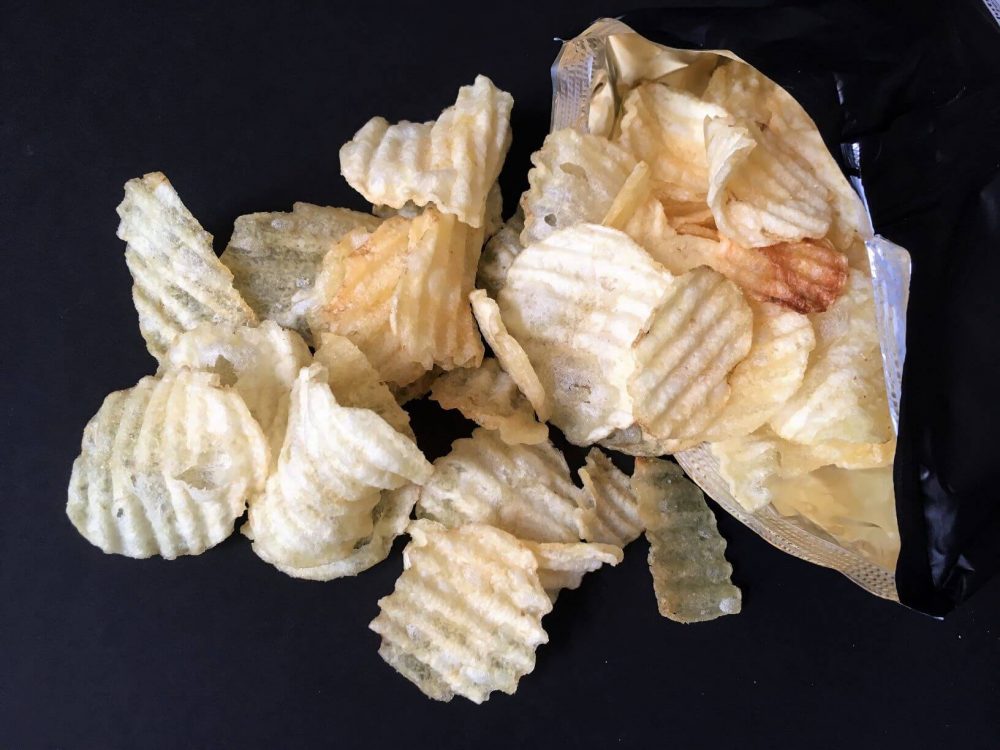
Boiling, Poaching or Steaming and Health
Cooking foods by boiling, poaching or steaming produces the lowest amount of cancer-causing chemicals in our foods. Stewing meats also helps reduce the amount of toxic compounds.
However, boiling and steaming are also not perfect methods for cooking.
Nutrients can leach out of the food and into the water that we later toss out. It is estimated that boiling vegetables loses as much as 60% of the water-soluble nutrients. That is a lot of nutrients wasted. Steaming is less likely to do this, but still some are lost. Saving the water for soups or stews is a good idea. It can be frozen and used later.
Not all foods can be boiled or steamed, however. Some foods look nasty after they have been boiled. Have you ever seen poached chicken breast? It does not look appetizing to say the least. You will probably want to add a sauce on top of that chicken.
Slow Cookers are the Healthiest Way to Cook
The slow cooker is one of the healthiest methods of cooking available to us. It is the best way to cook red meats, with little production of PAHs and HAAs. It cooks slowly on low temperature with a moist heat, so preserves nutrients in the food. The slow cooking helps break down tougher fibres in foods and make them more digestible.

Slow Cookers are the Healthiest Way to Cook
Lead in Some Slow Cooker Ceramic Liners
Ensure that your slow cooker is lead-free. Some slow cookers may contain lead in the glaze in the ceramic coating. Combine the long cooking times with some acid foods, such as tomatoes, lead may leach from the glaze into the food.
Lead can build up in our bodies and cause nervous system signs such as learning disabilities, mood disorders, fatigue, abdominal pain, hearing loss, joint aches and seizures, to name only a few symptoms.
This is unlikely to be a problem with the slow cookers sold today. However, this wasn’t recognized until about 2004, where 20% of the slow cookers at that time were found to leach lead into our food. Stay away from second-hand or older slow cooker liners and ensure any new products you are considering are certified as lead-free. If you purchased your slow cooker over 12 years ago, you may want to do a lead test or just buy a new one.
Pressure Cookers Preserve Nutrients in Food
Water typically boils at 212 degrees Fahrenheit at sea level. While this may be enough to cook an egg in about 8-12 minutes, it is not high enough to cook some things, like meat, unless left for a very long time. If the pressure is increased, so is the temperature at which water boils. Thus, by increasing the pressure, we cook foods at higher temperatures more quickly.
While pressure cookers use high heat, the heat is distributed evenly and quickly. It uses steam to cook food, so doesn’t accumulate the toxic compounds like the high dry heat we discussed with grilling, roasting and frying.
Pressure Cooking Preserves Nutrients
Numerous studies have shown that pressure cooking is the best method for preserving nutrients in food, including vitamin C, which most cooking methods destroy. It does this because it cooks faster in a moist heat using less water. There is less time for nutrients to break down. And there is less leaching of nutrients into the water that is discarded in other moist cooking methods, such as steaming or boiling.
Pressure Cooking Helps with Digestibility
Pressure cooking also helps break down phytic acid and lectins in grains and legumes making them more digestible and less gas producing. By breaking down these compounds that also bind other nutrients in our digestive system, pressure cooking can increase the availability of the nutrients in these foods too.
Dangers of Pressure Cookers
The biggest downside to a pressure cooker is the pressure. These units cook foods using high pressure. That means that if the seal on the lid is fails, that pressure could send the lid and its contents flying. Faulty pressure cookers have been responsible for injuries, including burns and broken bones, and damage to homes. Be careful if you use a pressure cooker. Don’t buy second-hand units. Follow the manufacturer’s instructions carefully and ensure proper maintenance of the unit.
Most units today are made from stainless steel. However, stove top units can be made from aluminum. Aluminum conducts heat better than stainless steel, is lighter weight and cheaper. Aluminum is not harmful in small amounts, but can react with some foods, corroding the metal and leaving a metallic taste to the food. There is some debate about aluminum’s roll in Alzheimer’s Disease. However, studies to date have not confirmed that aluminum causes this neurological disorder.
Instant Pots
An instant pot is a multi-tool kitchen appliance that is a slow cooker, pressure cooker, rice cooker and steamer, among other things. Many of my friends who have instant pots and absolutely love them.
I haven’t jumped on that bandwagon craze yet. I still love my traditional slow cooker.
Because I haven’t purchased one yet, I don’t feel I can comment on them here, specifically.
However, that said, it does promise to cook with moist heat, and combines the benefits of the healthiest cooking methods (i.e. slow cooker and pressure cooker).
I might have to buy one of these units and try it out.
If you have one, let me know what you think? Should I get one?

The Instant Pot may be THE BEST cooking method for our health.
It uses moist heat and pressure to cook quickly and keep nutrients in food.
Eating Raw
So, with all these problems associated with cooking our food, why don’t we just eat raw?
Well, that isn’t ideal either.
There are pros and cons to eating raw that I will explore in a future blog post. For now, let me just say …. bacterial contamination, digestibility and availability of nutrients.
Even with all the issues, I still love cooking.
The Take-Aways for Cooking and Cancer:
- Avoid high dry heat that can cause carcinogenic compounds
- “Low and slow” cooking methods are best
- Moist heat cooking is better that dry heat
- Cook with tools that add good things to the food (e.g. iron)
- Buy smart to avoid potentially toxic cooking tools (e.g. Teflon and lead in slow cooker liners)
- Cook from scratch and avoid pre-cooked or processed foods
I have many more Healthy Eating Articles on Pink Ribbon Runner.
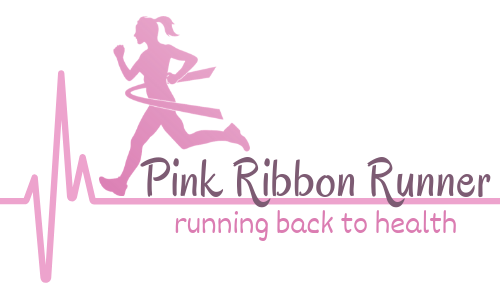
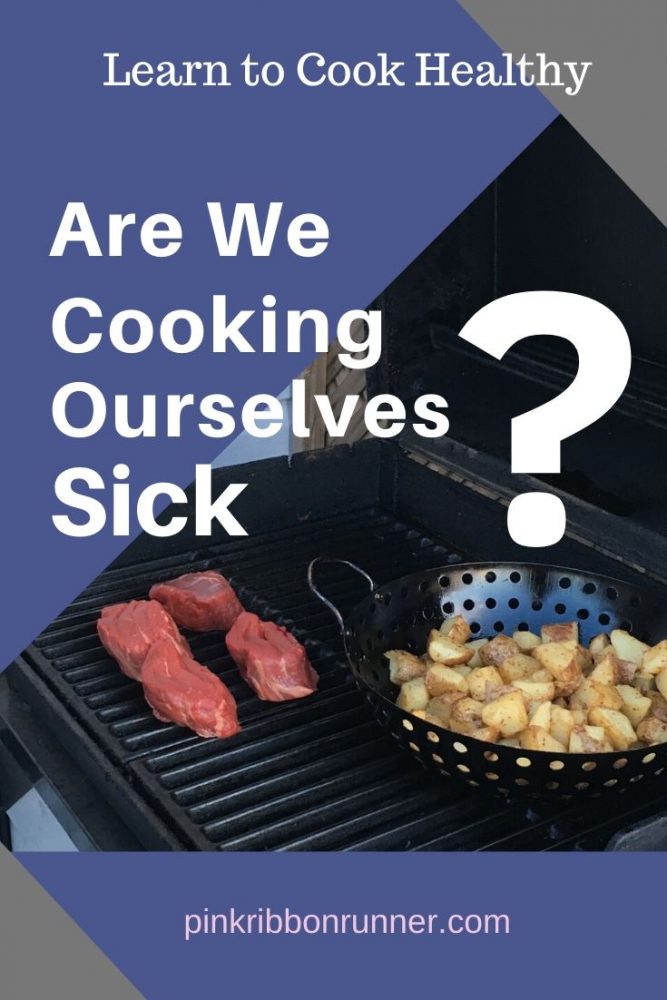

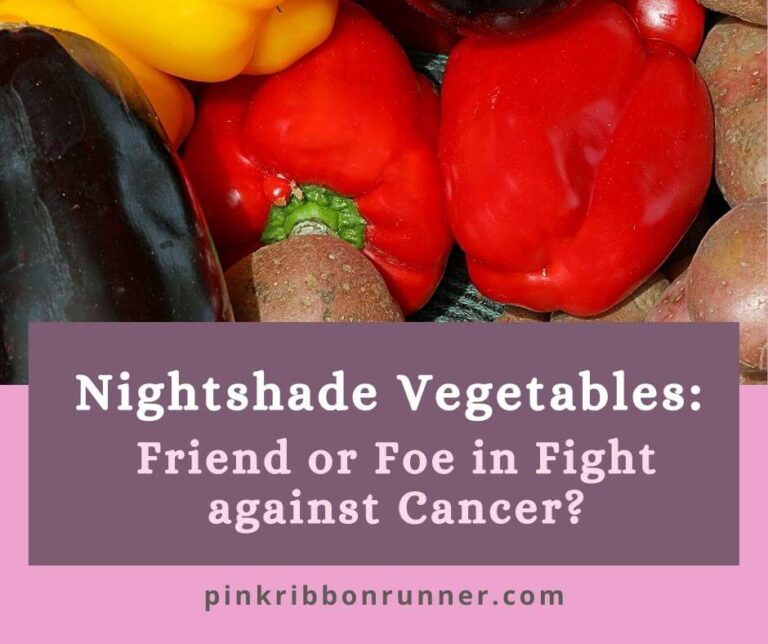

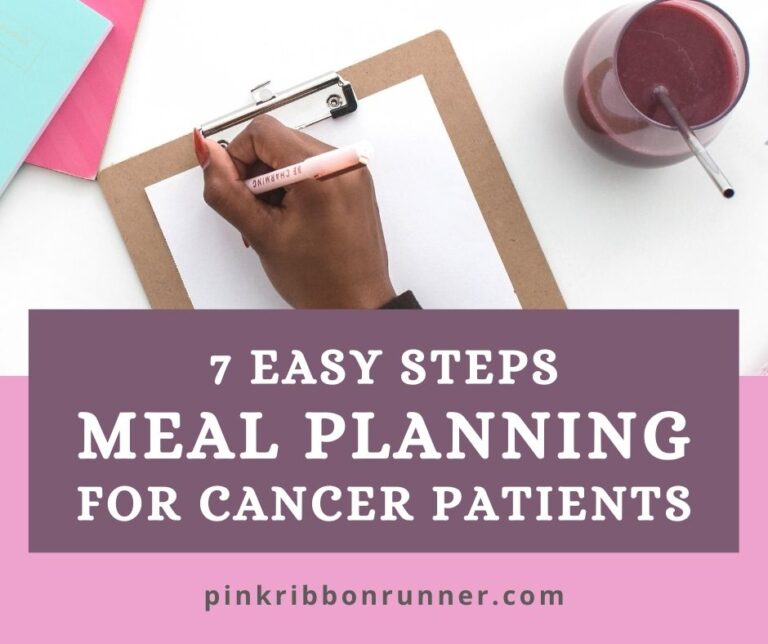
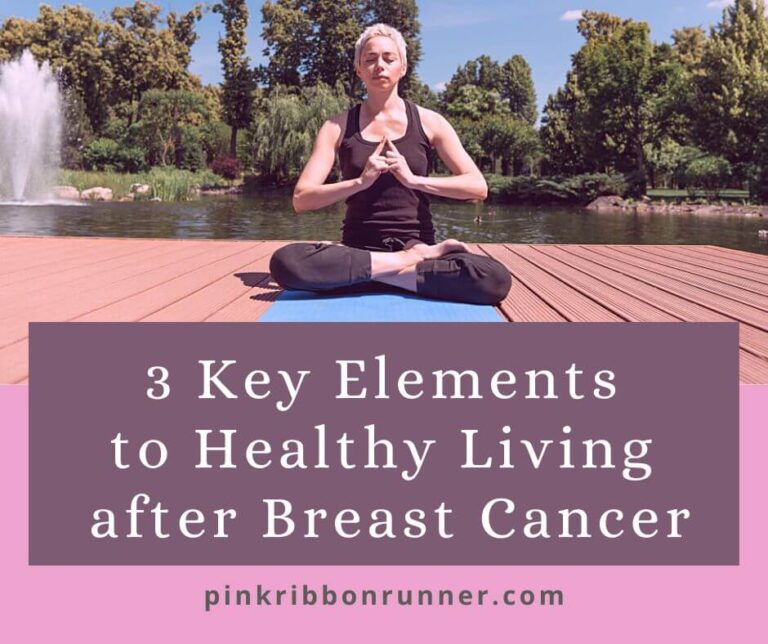
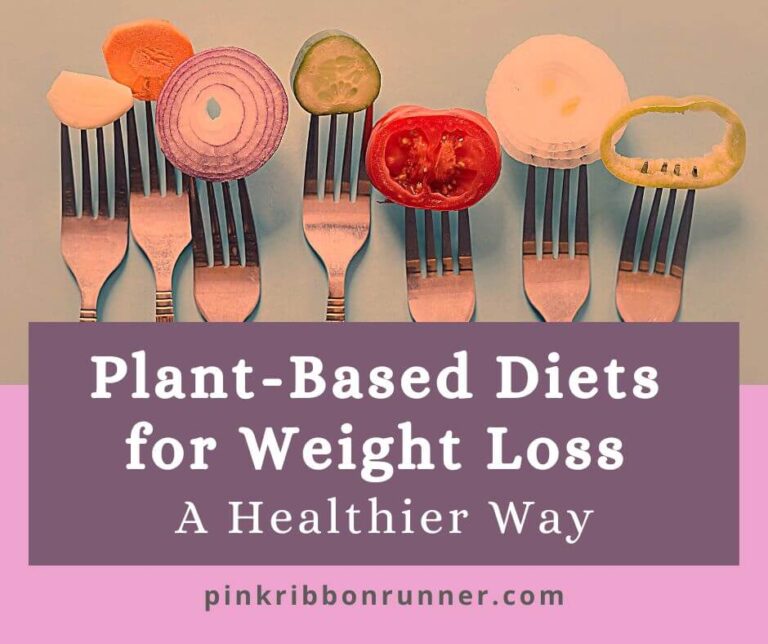
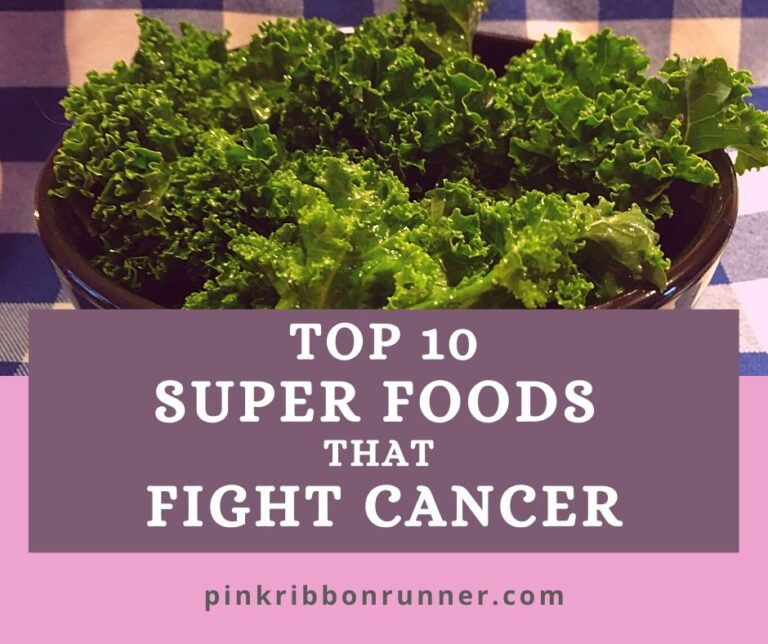
Another great post. I look forward to your next articles 🙂
Anything charred, no matter if it is meat or bread, anything processed/refined, anything that should not be processed at high temperature and ANYTHING cooked in aluminium and kept in plastic non-BPA free is unhealthy. Who has been through chemo has made this research, surely. I always say that proper cooking requires a biochemistry degree, for a reason. Stay healthy! The worst is in the past. This is how I see it as well!
Wow! Seems we’re in trouble whichever method of cooking we choose! Think I’ll stick with my usual mantra of ‘all things in moderation’ – with the exception of charred BBQ food, which I’m not a fan of anyway. Thanks for the information, Patricia.
Slow cooking with moist heat seems the best method. But you are right… Everything in moderation. It also depends on what you are cooking too.
Now that I’ve finally started cooking I hate to read this….. it seems no matter what you do there is a risk. It’s just a matter of balancing them out and not going to excess with any of them